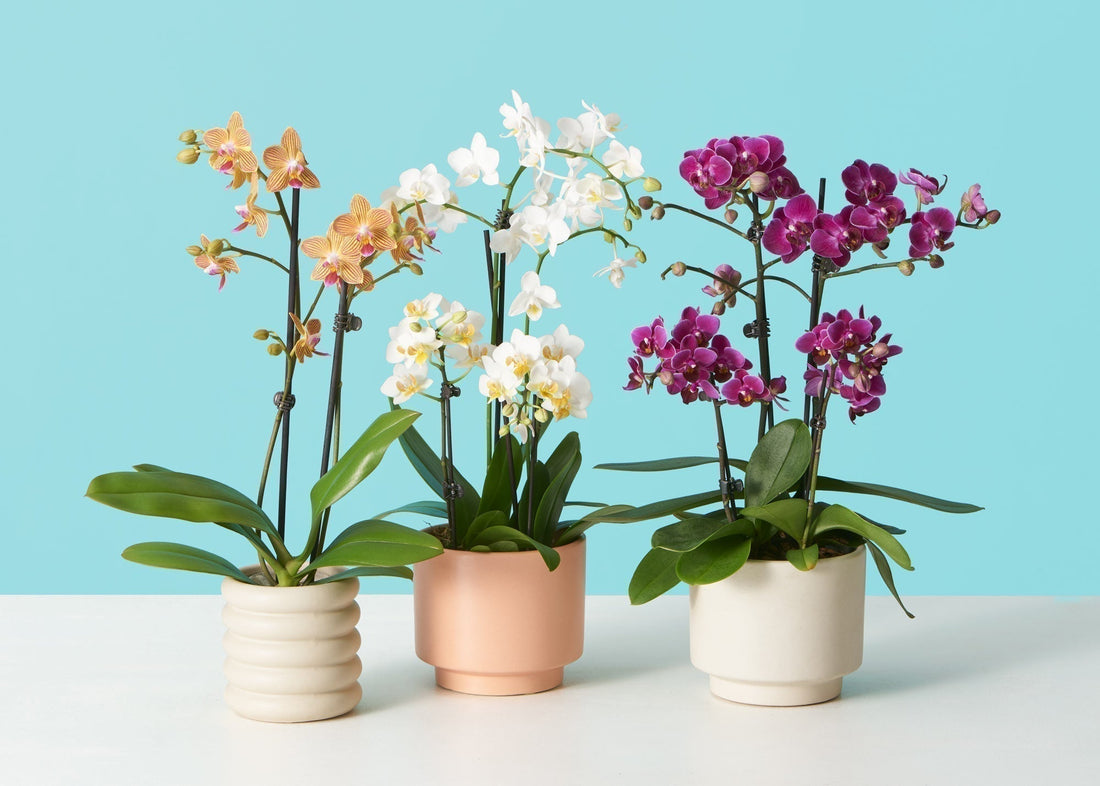
Plants 101
Phalaenopsis Orchid Plant Care
Orchids are epiphytic in their native habitat, growing on trees and rock formations, instead of directly in the ground. The orchid family (Orchidaceae) can be found in almost every habitat besides glaciers, but the most diverse types of orchids can be found in the tropics. They are known for their bright colorful flowers, and there are about 25,000 different species around the world.

Learn how to care for the Phalaenopsis orchid.
The name “orchid” comes from the Greek word orkhis, and was named by an ancient Greek botanist named Theophrastos, who thought the orchid's roots resembled a part of the male anatomy. Orchids are epiphytic in their native habitat, growing on trees and rock formations, instead of directly in the ground. Species from the orchid family Orchidaceae can be found in almost every habitat around the world besides glaciers — but the most diverse types of orchids can be found in the tropics. These tropical orchids are known for their bright, showy flowers that come in many different colors. There are over 25,000 different orchid species around the world, and over triple that number in cultivars and hybrids!
The popular Phalaenopsis orchid is one of the easiest varieties of orchids to grow as a houseplant, and is often called the beginner orchid due to its easy going nature, or the moth orchid due to the shape of its blooms. Native to India, China, and Southeast Asia — this orchid with leafy stems and long-lasting flowers does best in a bright, warm, humid spot. Indoors, the Phalaenopsis will typically bloom about once a year, for up to three months. After a blooming cycle, the flowers will wilt and fall off. When this happens, don’t worry, your orchid is not dead, it’s just storing up energy to re-bloom again next season!

Sunlight
Thrives in bright indirect light to a few hours of morning direct sun, but can tolerate low indirect light. Preferably found in an east or north window, or a diffused west or south windows can work. Not suited for intense, direct afternoon sun.
While the Phalaenopsis orchid can tolerate lower light conditions it will inhibit its growth and prevent future blooms. Don't have enough natural lighting? Try a grow light!
Water
Water every 1-2 weeks, allowing potting medium to dry out between waterings. Top or bottom watering, as well as using ice cubes, are all ways to water Phalaenopsis orchids. Choose whichever method works best for you!
If kept in decorative cache planter, pour out excess water after watering if top or bottom watering. Expect to water more often in brighter light and less often in lower light.
Humidity
While they can tolerate normal room humidity, Phalaenopsis orchids do not like dry air, so try to keep humidity anywhere from 40–70%. During the fall or winter, you can help to boost humidity with a humidifier or wet pebble tray.
Temperature
Average home temperature of 65°–75°F. They can tolerate as low as 55°F and as high as 85°F.

Potting Mix
Smaller orchids are initially potted in either a coco plug or sphagnum moss. They can remain in this potting medium for 1-2 years, until their roots and leaves have outgrown the size of the pot and the orchid needs fresh nutrients and larger space. When repotting these orchids, you can pot them into an orchid bark mix.
Larger orchids are potted in a bark media. Bark provides the proper airflow required to keep mature roots happy and healthy. Because orchids are epiphytes that grow on trees in their natural habitat, they need air to flow around their roots, and traditional potting mix just won't do. (If you gently dig into the bark media with your fingers, you might just spot the coco plug at the center of the pot, where the baby orchid was first potted!)
Repotting
Learn how and when to repot your orchid here.
Common Problems
Symptom: Wilting, wrinkling leaves
Cause: Underwatered
Symptom: Yellowing leaves
Cause: Overwatered, or too much sun
Symptom: Wilting flowers
Cause: Ending its yearly blooming cycle, storing up energy to re-bloom
Watercolor Orchids
If you're looking for a Phalaenopsis orchid with a little extra flair, look no further than our Watercolor Orchids. These orchids are dyed using a safe and natural patented method of injecting a specially formulated dye (similar to food dye) into the stem of the plants. There's no harm to the plant itself, and the orchids are grown using the same sustainable and environmentally conscious methods as non-dyed and mini orchids. They are as easy to care for as non-dyed orchids, but can make for a fun and unique gift or pick-me-up purchase. When Watercolor Orchids rebloom, their flowers will be the color of the natural plant (white or light pink), and will not have color from the dye. Watercolor Orchids are pet-friendly, i.e. non-toxic.

Words By The Sill
Empowering all people to be plant people—a collection of articles from The Sill's team of plant experts across a variety of plant care topics to inspire confidence in the next generation of plant parents. Welcome to Plant Parenthood™.
Do Some Plant Shopping